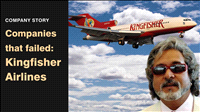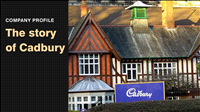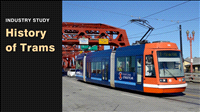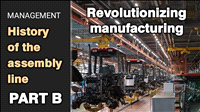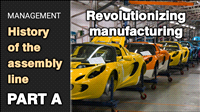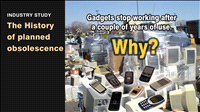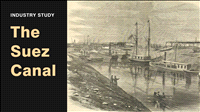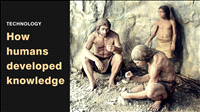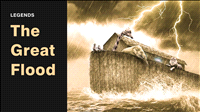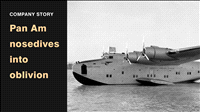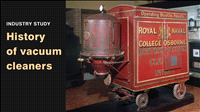History of the assembly line part B | What is an assembly line
By Kiron Kasbekar | 21 Mar 2023
The video I’m going to show you today is the second part of my discussion of the assembly line, a system that was introduced more than a hundred years ago, and has now become an absolute standard across manufacturing industries all over the world.
If you have not seen Part A, you can watch it by clicking the link in the description below.
At the end of the last video I referred to how Ford introduced the assembly line with the Model T. This is what I had always believed. Whatever I had read told me it was the Model T that was the first to use the assembly line. But then I came across this book.
In his book, My Forty Years with Ford, Charles E Sorensen, who worked with Ford Motor for four decades as patternmaker, foundry engineer, mechanical engineer, industrial engineer, production manager, and executive in charge of all production, and eventually as vice president and a director, sheds some light on the matter.
He says: ‘the final assembly line originated in our Highland Park plant in the summer of 1913. It was born then, but it was conceived in July of 1908 at the Piquette Avenue plant and not with Model T but during the last months of Model N production.’
That was really news to me! I had read everywhere that the assembly line was first tried out on the Model T. Now I read it was the Model N.
But then there is so much written about the Model T that I imagine once the Model N did the proof of concept test, the Model T began to be made on the assembly line.
Sorensen has stuff to say about the assembly line. ‘Interchangeable parts were not new in 1913,’ he wrote. ‘Johann Gutenberg, the first printer in the Western World to use moveable type, employed that principle five hundred years ago. Eli Whitney used interchangeable parts when making rifles in the early days of the Republic; and in early days of this century Henry Leland, who later sold out to Ford, applied the same principle in the first Cadillac cars.’
He adds that overhead conveyors were used in many industries, including in the automobile industry. And substitution of hand labor by machine work was also not new.
‘Nor,’ he says. ‘was orderly progress of the work anything particularly new; but it was new to us at Ford until, as I have already described, Walter Flanders showed us how to arrange our machine tools at the Mack Avenue and Piquette plants.’
According to Sorensen ‘What was worked out at Ford was the practice of moving the work from one worker to another until it became a complete unit, then arranging the flow of these units at the right time and the right place to a moving final assembly line from which came a finished product.’
He adds that regardless of the fact that these principles had been used earlier, ‘the direct line of succession of mass production and its intensification into automation stems directly from what was worked out at Ford Motor Company between 1908 and 1913’.
Now we come to the question of why Henry Ford said this about the Model T car: ‘Any customer can have a car painted any color that he wants, so long as it is black’.
Odd thing to say. But here is the explanation.
Following the adoption of the assembly line system, Ford was producing a car every three minutes. Production rose eight times while using less manpower.
But – and there was a big but – the method was so successful that paint became a bottleneck. The paints that they used those days didn’t dry fast enough – except one. And that was japan black, which dried quickly.
That forced the company to drop the variety of colors they offered earlier, before 1914, and focus on black. For the Model T. It was only after DuPont, the chemicals company, introduced the fast-drying Duco lacquer in 1926 that the Model T began to be offered in other colors. Incidentally, DuPont was an important investor in Ford rival General Motors.
Now let me shift focus a bit to a hypothetical question. The big ‘If’.
The ‘if something, then what’ question is sometimes a simple question. Sometimes a bit too involved with deeper ‘ifs’ and ‘thens’.
The assembly line is one such thing. Without assembly lines could we have reached the mass production levels that industries have achieved? I doubt it. I think we would still be at a stage when products would be made by artisans making all the parts of whatever was being made. And that just wouldn’t have resulted in the mass production we have today.
By adopting the assembly line, Ford’s Model T car, with its reduced costs, became affordable for the American middle class after the Ford management decided to cut prices in order to expand sales.
The Model T production cost had dropped dramatically. In 1908, the Model T was priced around $825. By 1912 the price had dropped to around $575. That meant a price drop from $15,000 to $10,000 in year 2000 prices.
In 1914, with an improvement in wages that went along with higher productivity, Ford assembly line workers could afford to buy the Model T with four months’ pay.
And it was more than just higher wages that Ford workers got. Ford instituted vital safety procedures to reduce accidents and injuries at work. For example, each worker was assigned a specific location so that the workers didn’t have to wander around the shop floor to fetch and carry car parts to their work stations.
Other companies followed in Ford Motor’s footsteps by paying high wages and getting high efficiency in return. As the efficiency gains of the assembly line spread across American industry, American industry took off on a steeper trajectory compared with industry in Europe.
Getting workers to focus on specific repeat tasks and work at a much faster pace resulted in higher output per worker. It took Europe some time to catch up.
American success was most visible in the automotive industry, where other countries, such as Germany, Italy and Britain had earlier been more or less on par with America in the past.
Ford quickly set up its plants in Britain and France in 1911, in Denmark in 1923, and in Germany and Japan in 1925.
One of the first European companies to launch its own assembly line system was a company called Vulcan Motor & Engineering Company. This company, built by Thomas and Joseph Hampson, two pioneers of the British automobile industry, built a purpose-built factory near Southport in 1907. Others followed.
The assembly line soon became a necessity for the automotive industry, Companies that did not have assembly lines were unable to compete with those that did, and went bust. As many as 250 companies which did not have assembly line were shuttered by 1930.
The assembly line system soon spread to other industries. This trend got strengthened with the Second World War, when the demand for aircraft and ships rose steeply. It would have been impossible to meet the demand without assembly lines.
Prefabrication was used extensively to build the Liberty class ships; the method enabled American manufacturers to assemble these ships in weeks or even days when otherwise it would have taken months.
Liberty ships were a class of British-designed cargo ships built in the United States during World War II under the Emergency Shipbuilding Program. These ships involved simple, low-cost construction that was ideal for mass production.
As many as 18 American shipyards were deployed to manufacture 2,710 Liberty ships between 1941 and 1945. That was an average of three ships every two days, the largest number of ships ever produced to a single design.
The principle was also applied to aircraft.
See the chart. If you have a sharp eye, you will have noticed that there is a discrepancy with two of the rows. The totals for the US and the USSR do not add up from the previous columns. There is a difference of 10,433 in the case of the US and 600 in the case of the USSR. But I am still using this table because it shows the broad differences between the Allied and the Axis powers.
In all of 1939, American aerospace companies had been able to make a bit more than 2,000 planes for the country’s air force. Then they adopted the assembly line system extensively, and the result was that these companies made 300,000 planes in the six years that followed.
Against that Germany could deploy less than 120,000 warplanes! They were completely outnumbered. Japan made even less. The US, Britain and the Soviet Union together made nearly 620,000 planes during the period, with France contributing a bit for the first two years, three times the 207,000 planes that Germany, Japan and Italy put together could make.
Such superiority in numbers could not have been built quickly without assembly line production.
As with wartime, so in peacetime. The assembly line method spread everywhere, and improvements were made.
But this time, after a couple of decades of American domination of the world markets for a host of products, especially automobiles, the Japanese and Germans came back with force. The Germans made high quality their main selling point. The Japanese also focused on quality, but they also brought several innovations to their assembly lines.
Among these innovations were the total quality approach, and the just-in-time system.
But Japanese companies were the most ardent followers of the quality movement, which, curiously, was given birth in America. Where American companies were slow in adopting quality management, Japanese companies swooped in on the concept, and built on it.
Toyota created what it called the Just-in-Time production system, which was one of the pillars on which Toyota built its post-Second World War production systems. By 1975 Japan was making more cars than the Americans, which had been in top position from the time cars began to be made. And Toyota continues to be in the Number One position today.
This was just a quick view of the assembly line system that has become a standard in industry today, with modifications to take into account computer-controlled systems and robots stationed over the line doing a big chunk of the work that used to be done by humans earlier.






